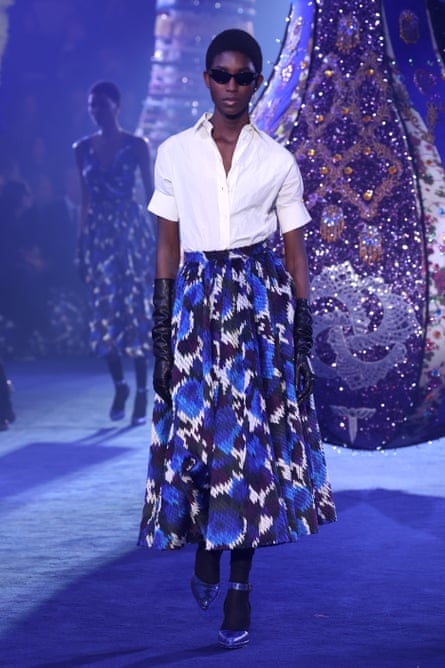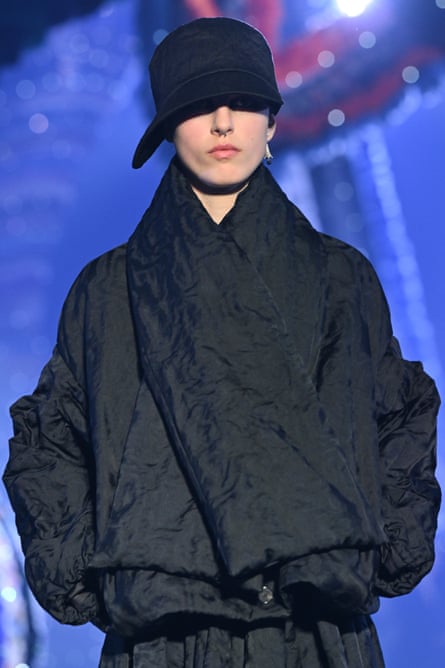
The 1950s were much cooler than you think. That was the message as Paris fashion week opened with a Dior show that upturned that decade’s retrograde image. Instead of pastel sweaters and milkshakes, this was the aesthetic of Juliette Gréco and the cafe society of Paris’s Rive Gauche (left bank) – strong black coffee, and little black dresses to match.
The designer, Maria Grazia Chiuri, set out to reclaim the 1950s for France, because they have been monopolised in popular memory by the US, she said backstage at the show. “I realised that like many foreigners, so much of my image of France was formed by Paris as it is seen through an American lens,” she said, referencing the romantic images of the photographer Richard Avedon, as well as Hollywood films.
In search of the French female story of the 50s, Chiuri chose as muses for the season Catherine Dior, Gréco, and Édith Piaf, who “lived very different lives, but shared a sense of rebellion – and who loved to wear black”. Catherine Dior, sister of the house’s founder, Christian, was a member of the French resistance, who gathered information on the movements of German troops and warships under the code name “Caro”. Arrested by the Gestapo, she was sent to the Ravensbrück concentration camp before escaping in 1945, and later awarded the French Légion d’honneur. Her emaciated form and traumatised personality was a key catalyst for her brother, whose postwar New Look silhouette was in part an attempt to gift hope and optimism to women like his sister, who had suffered during the war.
The show opened with a model wearing a white shirt, ravishingly unbuttoned, with a simple straight black skirt, in a nod to the free spirited mood of Gréco, a Dior client during the 1950s. A ladylike black handbag swung from an opera-gloved hand. Piaf, whose many accomplishments included breaking the US a decade before the Beatles while singing in France, was also here in spirit, in a black beret and in a Je Ne Regrette Rien slogan T-shirt, worn with lashings of kohl eyeliner and mismatched earrings. The collection was a moody, darkly chic vision of the 50s, in which the storm clouds of the next decade can be seen gathering on the horizon.
after newsletter promotion

The silhouette had the poised lines and lean finesse which Dior came to embody in the second half of 1950s, when the initial ebullience of the full-skirted New Look gave way to more graphic lines. The simplicity of the “New York” dress, a two piece set of black boxy jacket and straight skirt designed by Yves Saint Laurent, who was Christian Dior’s assistant and took over the house after Dior’s death in 1957, was echoed in the simplicity of inky skirts and jackets. A crucial difference in attitude was achieved by using modern fabrics, rather than recreating from the archives: where the clothes of the 1950s were stiff, the 2023 versions wear their grand volume lightly. “The way I can make clothes now is less like sculpture,” Chiuri said. “It is less precise, less about perfection. I like it better, it has more warmth.”



